Real eState
Celebrity real estate: Jackie Kennedy’s D.C. home for sale
|
|
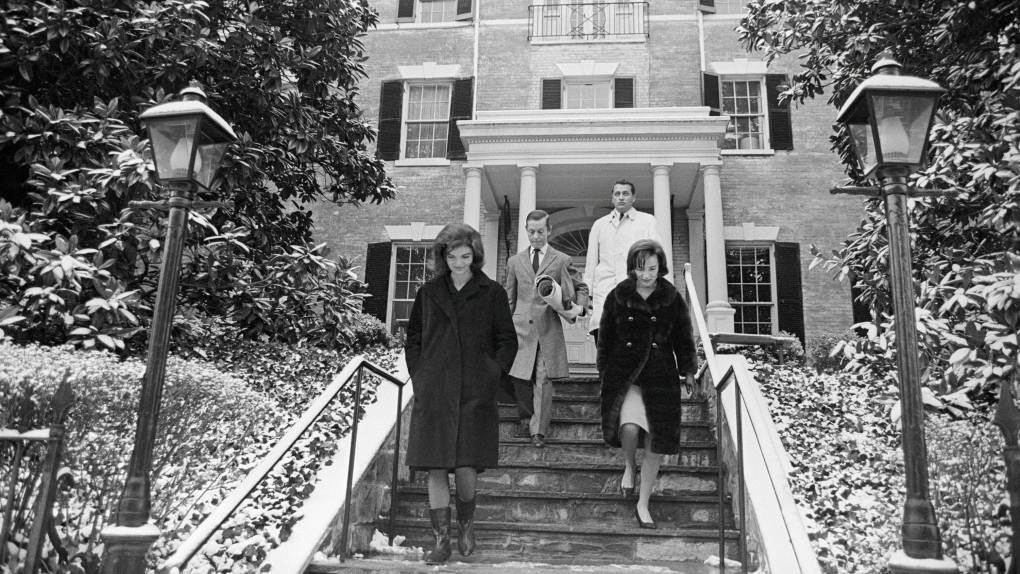

You can live like American royalty in the capital kingdom of Washington, D.C.
For just US$26.5 million.
That’s the price tag for the sale of three Georgetown mansions, which have been combined into one property with a total area of 16,000 square feet.
An early Georgetown mayor and a former Miss America have called one of the buildings home.
For the rest of us, the photos on the Sotheby’s listing might be as close as we get inside 3017, 3009 and 3003 N St. NW.
“The focal point (at 3017) of this storied estate is a grand Federal style home built in the late 18th century which has been home to several prominent Americans including most notably First Lady Jacqueline Kennedy,” Sotheby’s says.
“While retaining its historic elegance, the estate has been meticulously transformed to a modern showplace embracing the highest quality design, fixtures, and finishes. No detail was overlooked,” the listing continues.
“In 2017, this home was seamlessly connected with 3009 and 3003 N St. NW, creating a truly unique estate spanning over 16,000 interior square feet, with 13 bedrooms, 13 full baths and 5 half baths.”




Real eState
This Toronto home is a ’90s decor trip but a steal at only $600K
|
|
If you’re a millennial and grew up in the ’90s, you’ll probably remember a fair amount of ’90s home decor trends that might still haunt you to this day.
There were sponge-painted walls, all-beige everything, wallpaper borders, oak cabinets, carpets in places where there shouldn’t be carpets, bedroom sets from big-box stores, Southwestern or Tuscan decor in homes that weren’t in Arizona or Italy, and the list goes on.
We thought we’d left those troubling times in the past, but 39 Hatherley Rd. really brings back all those memories.
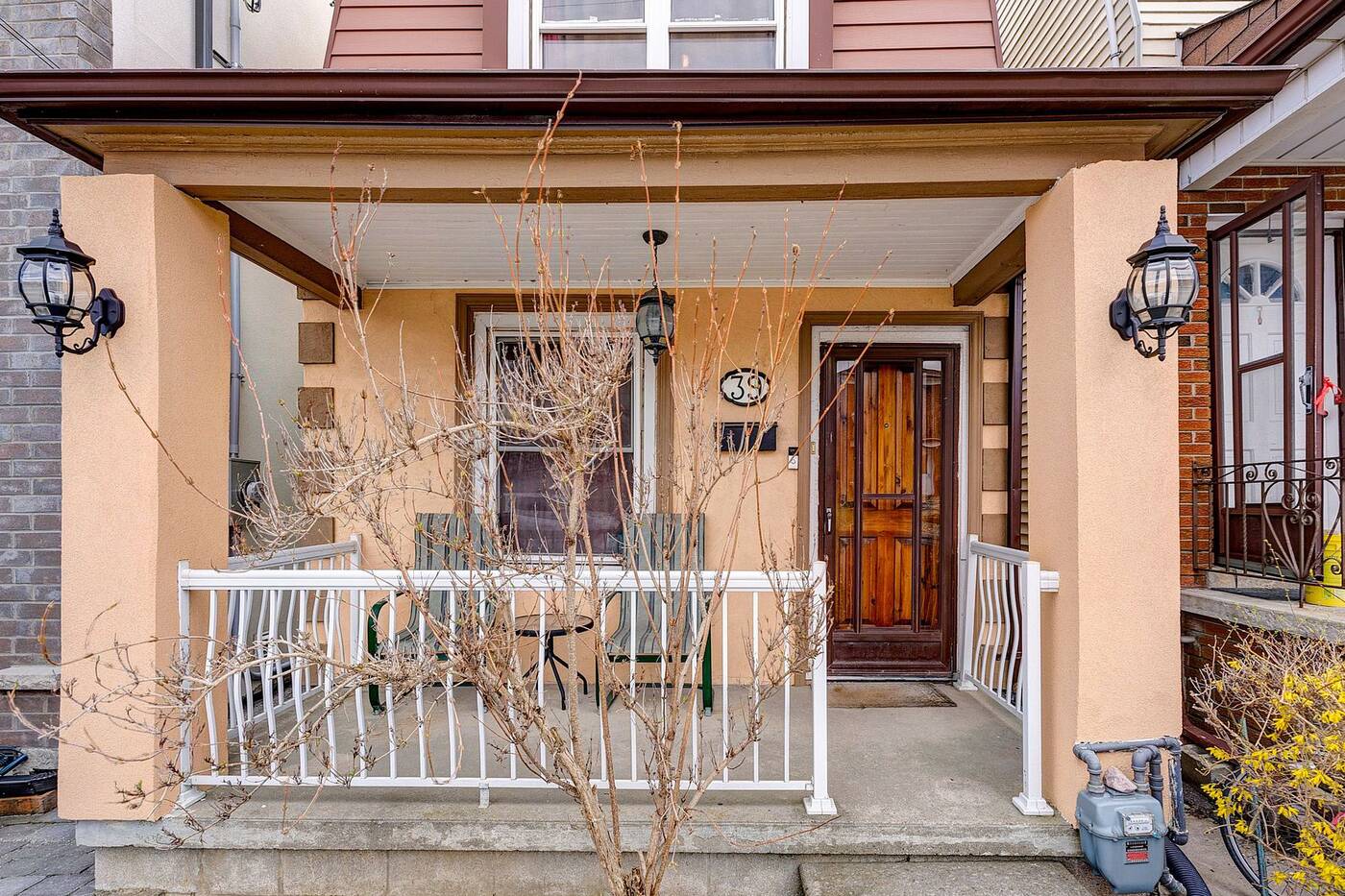

The front porch.
Somehow this two-bedroom, one-bathroom house hit almost every ’90s trend, except for carpets in the bathroom (phew!).


The entryway.
What’s weird is this house has changed ownership a few times since the 90s. In fact, it was most recently purchased in 2010 for $250,000.


The living room.
So it’s somewhat surprising that when you look at past listing photos, almost nothing has changed. In fact, it seems they added the sponge-painted walls in 2010.


The kitchen.
But despite 39 Hartherley Rd. being a total throwback, this house is, as the listing says, “a diamond in the rough.”
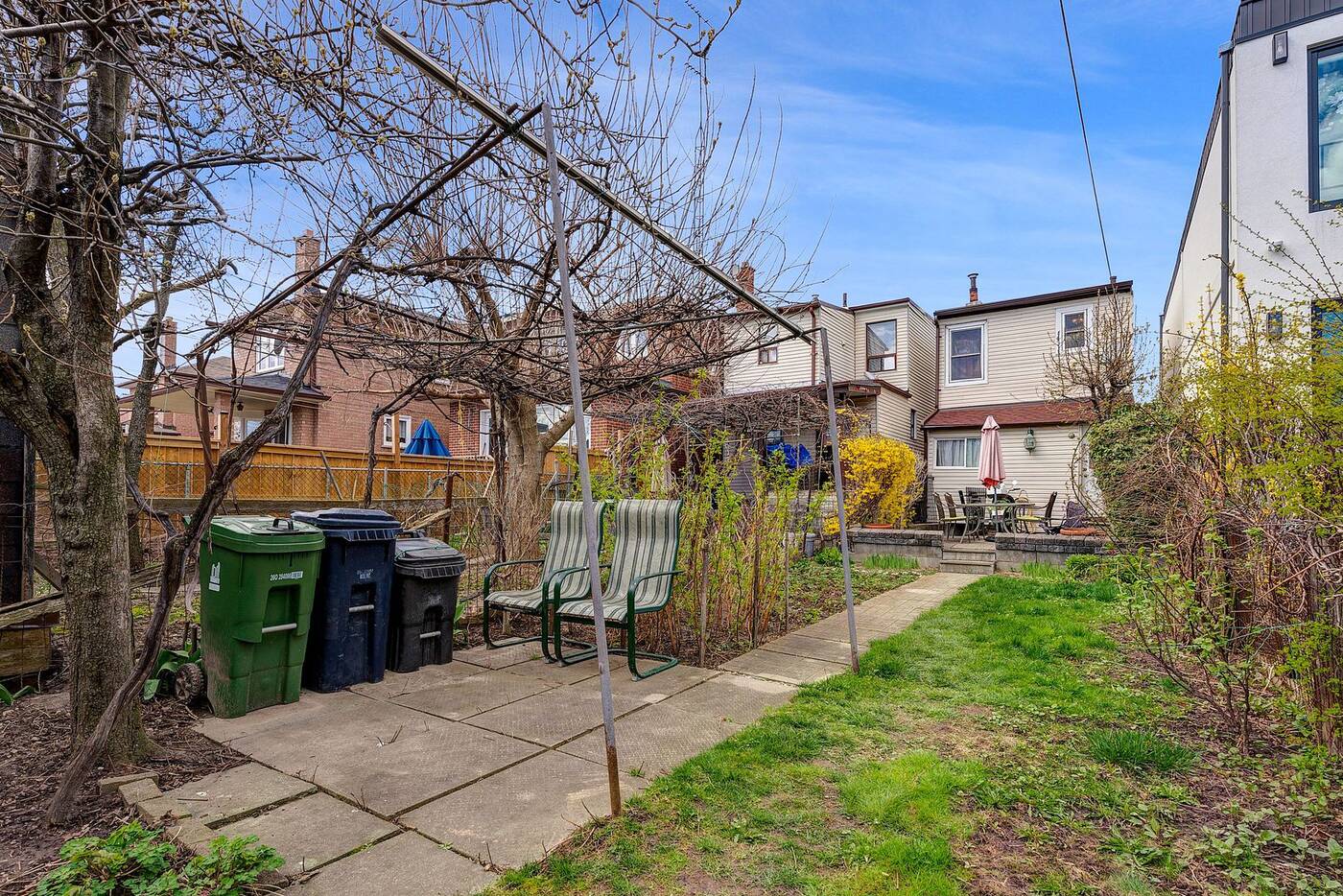

The backyard.
First off, it’s a detached house with a 125-foot deep lot in a good location.


The kitchen has plenty of storage but, sadly, no dishwasher.
The main floor has a living room and kitchen with enough space for a dining table.


The main floor.
The layout is a bit awkward but the Dutch door off the kitchen is too cute.
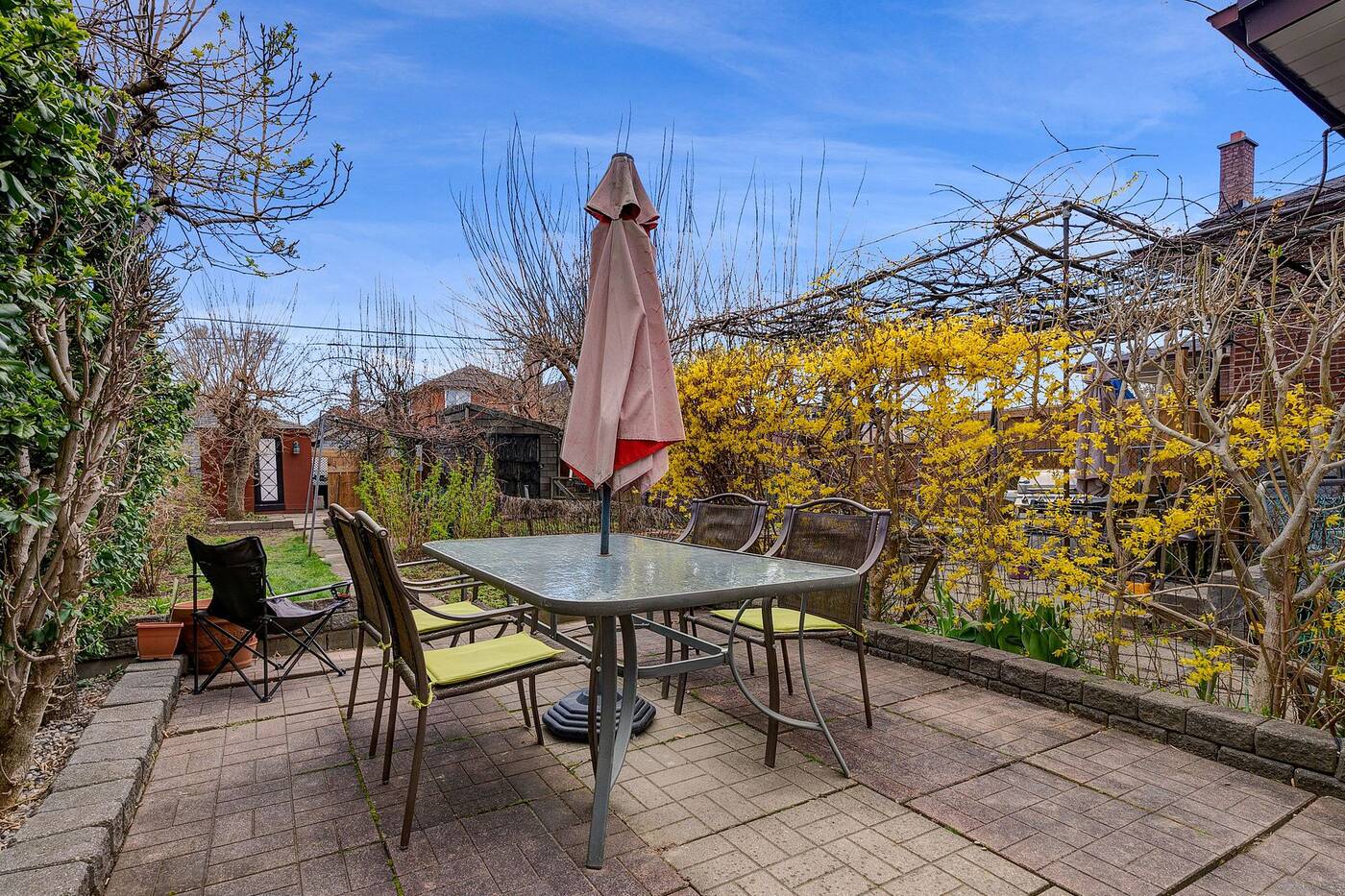

The back patio.
Off the kitchen is a laundry room/mud room that leads to the spacious backyard.
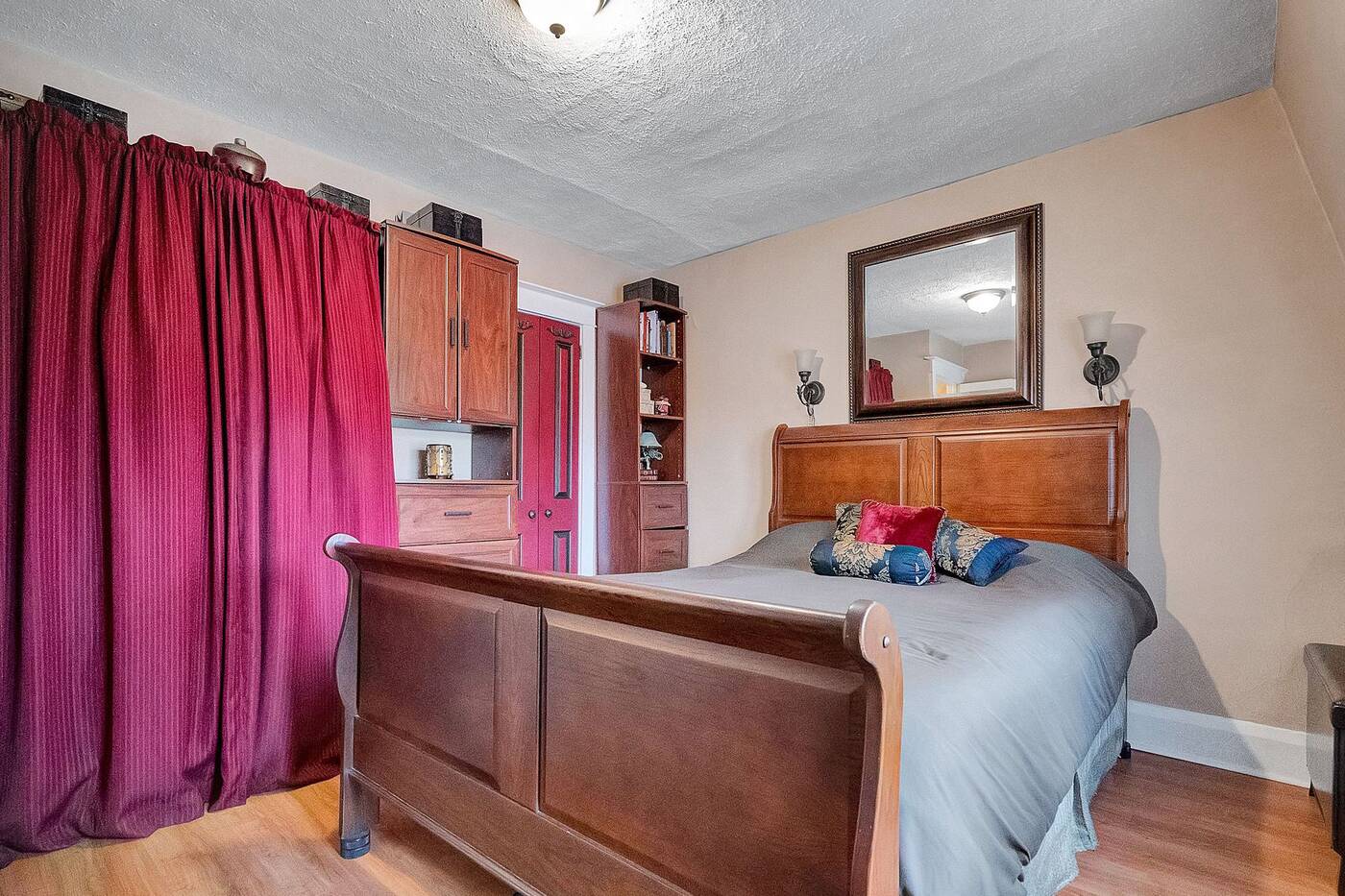

The primary bedroom.
Upstairs, there are two decently sized rooms and a small bathroom.
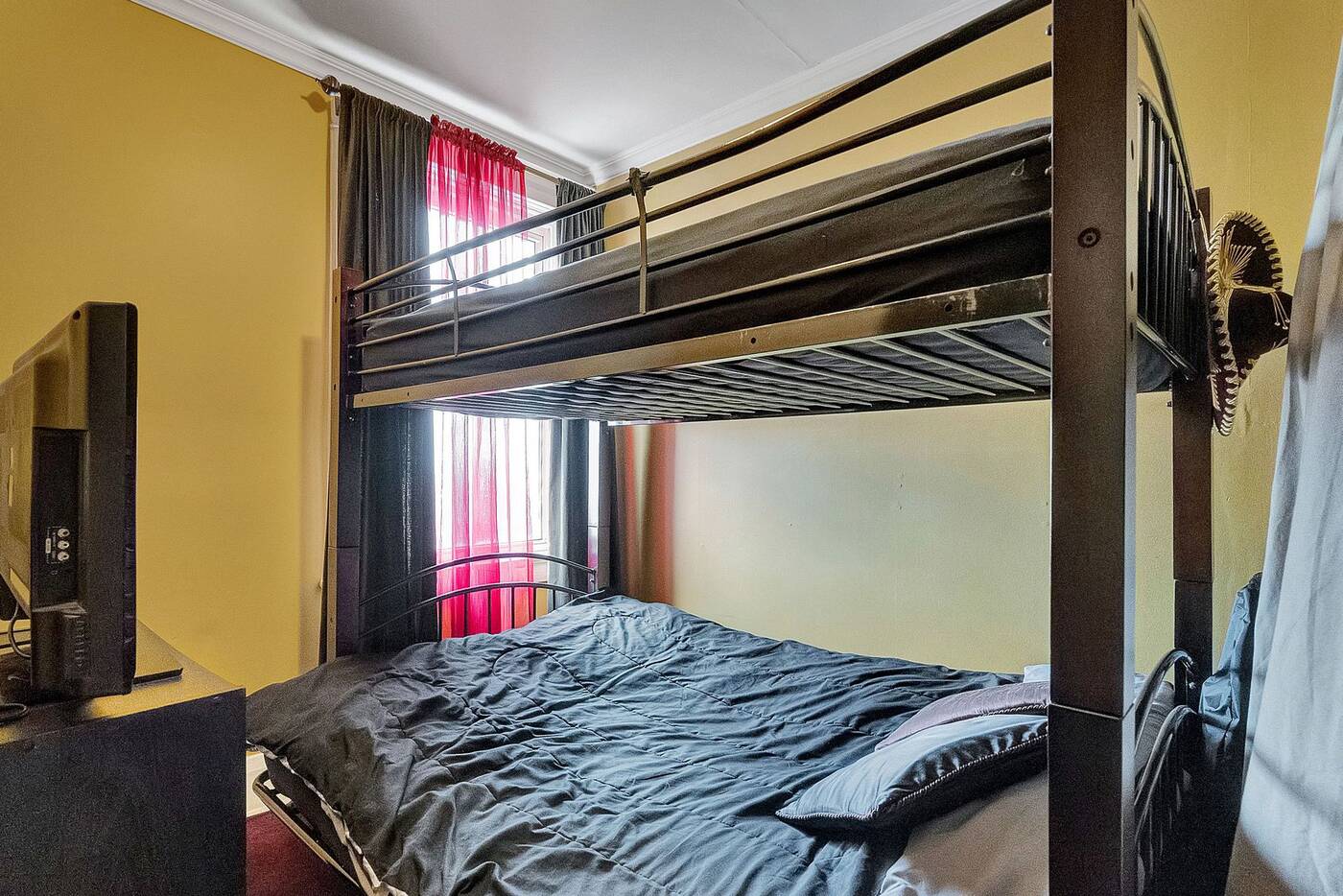

The second bedroom.
The house definitely needs some updating but the roof was done in 2015, the furnace is only a few years old, the electrical has been updated, and there’s room for expansion.


A fireplace in the living room.
Also, a coat of paint will do wonders to brighten up the all-beige ’90s aesthetic.
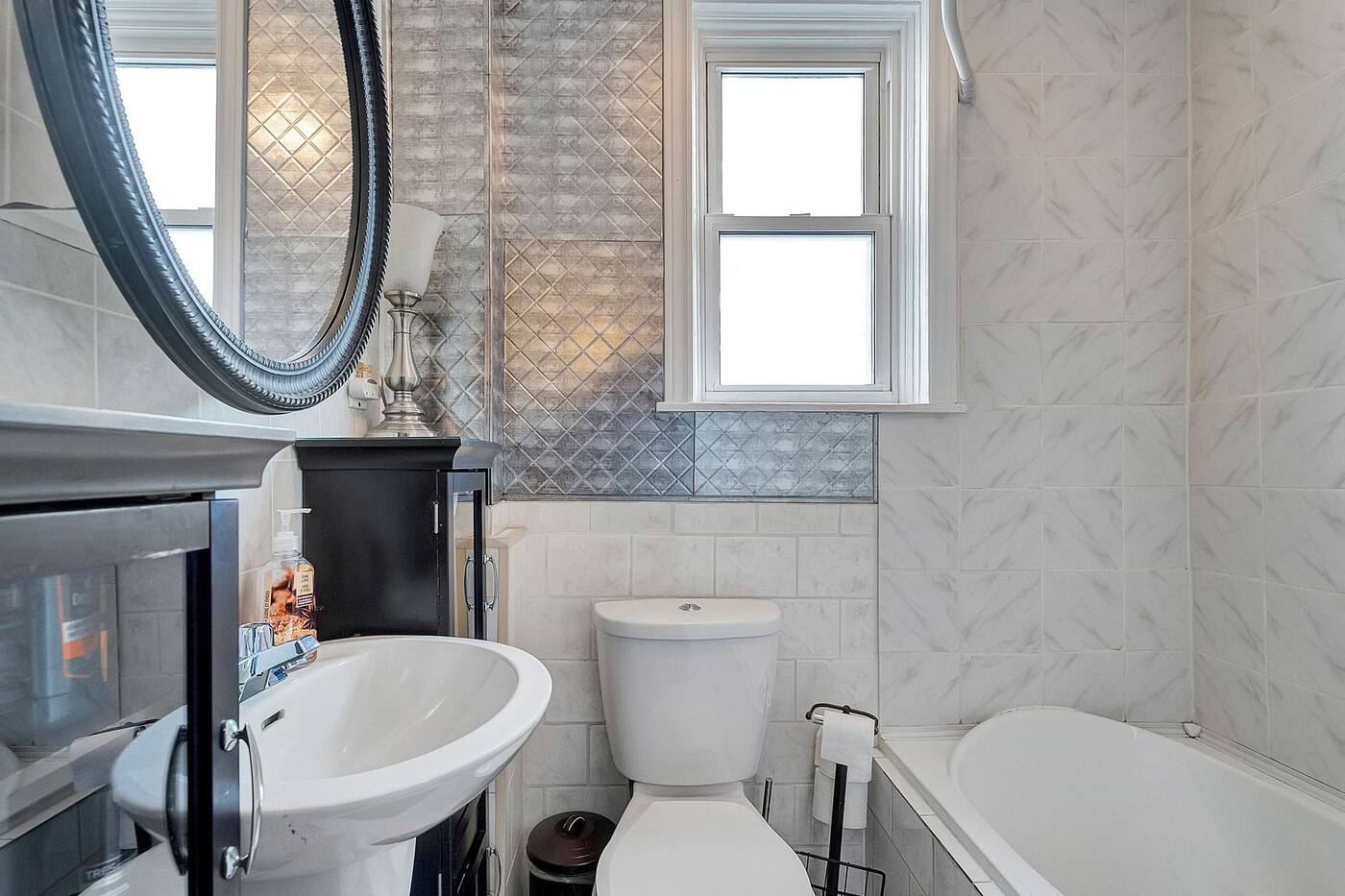

The small bathroom.
However, the biggest selling point of this home is the price point.
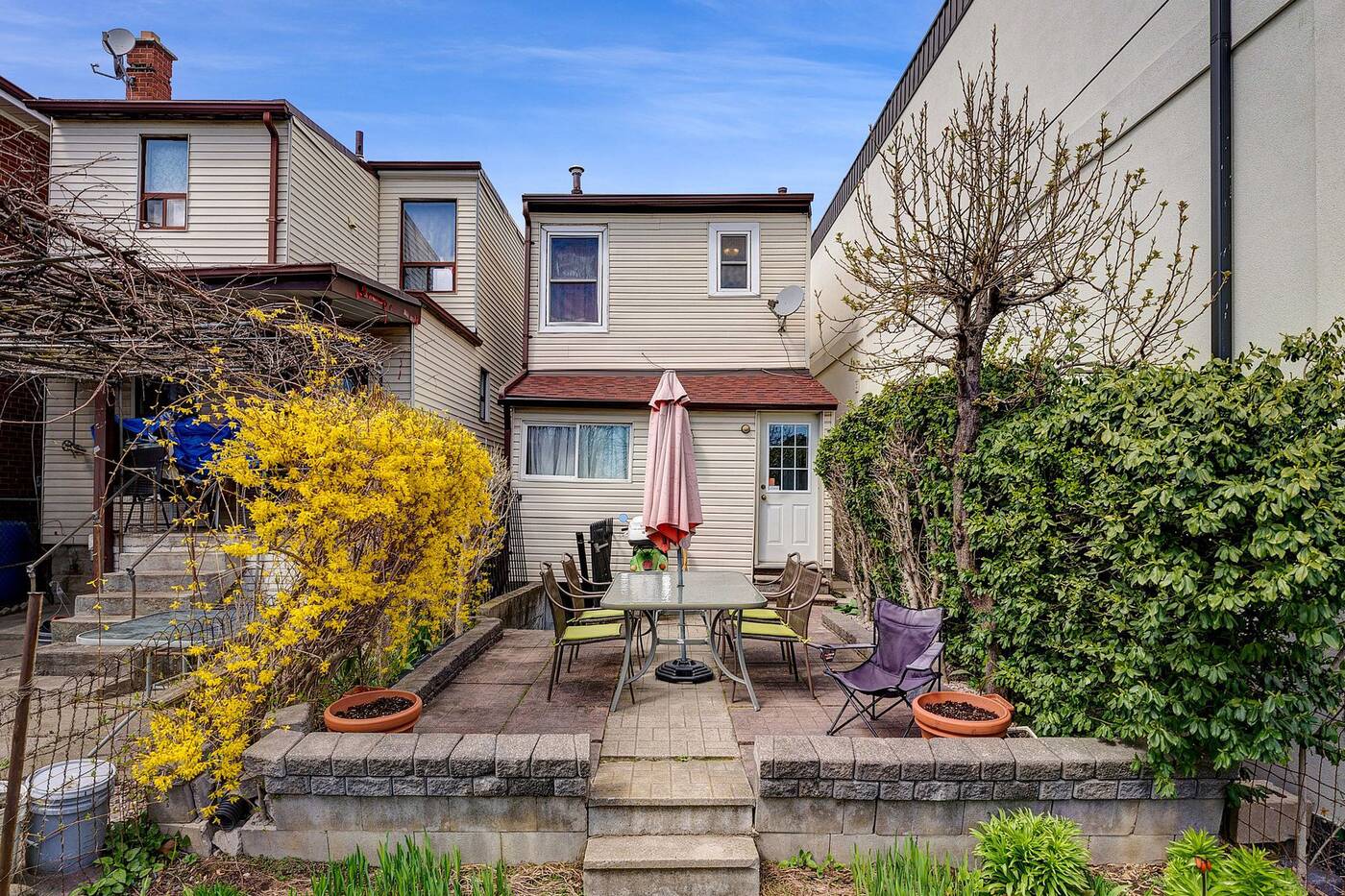

The back of the house.
39 Hatherley Rd. is listed for only $599,999, which is almost unheard of in Toronto, even if this place will probably go for closer to $700K.




Real eState
Blending Function and Style: The Best Garage Door Designs for Contemporary Homes


|
|
Modern and contemporary residences stand out with streamlined shapes and minimalist designs. They span from sleek global styles to cozy ranch layouts, offering something unique for all tastes.
Selecting the perfect garage door can pose a challenge for homeowners. Garage doors seamlessly blend with style and durability. This article offers insights on choosing garage doors that complement contemporary homes.
Key Architectural Elements
Contemporary homes are distinguished by their clean lines and minimalist aesthetics. Architects focus on crisp, sharp lines to delineate spaces distinctly. Expansive windows often play a pivotal role, inviting natural illumination indoors and blurring boundaries between interior and exterior living.
Materials utilized are typically modern, like glass, steel, and concrete, contributing to a cohesive design that emphasizes simplicity.
In these designs, every element serves a purpose. There’s no room for superfluous details. Hues tend to remain neutral or monochrome, creating a canvas where architectural forms take center stage.
This approach ensures that today, garage doors look like part of the house. They use the same materials and designs as the home’s outside.
Home Styles: From International to Ranch
Houses come in many different styles. The international style is from the 1910s and has European influences and industrial design. This style is simple and focuses on function.
On the other hand, classic American homes like Cape Cod, country French, Colonial, Tudor, and ranch all look different. Cape Cod homes are symmetrical and simple. Country French styles look rustic and elegant. Colonial houses are formal with balanced proportions. Tudor homes have steep roofs and decorative wood beams.
Ranch-style homes are one story and blend the indoors and outdoors. All these styles developed over time and show different cultural influences. Each style needs a specific type of garage door to match the overall look – like traditional panels for Colonial or Cape Cod homes, or sleek options for modern or contemporary homes.
The variety of home styles reflects how architecture has changed, not just in design but in the cultural influences behind each style.
Garage Door Styles for Contemporary Homes
Today’s modern homes demand garage doors blending sleek lines with practical use. From minimalist to sophisticated, various styles fit any contemporary aesthetic perfectly.
Traditional and Raised Panel Options
Traditional and Raised options meld classic appeal with modern flair, and According to the experts of garage door repair West Vancouver experts, they are ideal for today’s homes. These garage doors boast rectangular raised panels adding depth and texture to any facade. Each meticulously designed panel exudes elegance while respecting the home’s architectural integrity. Colonial, Ranchstyle, and Sonoma designs offer panel variations suiting personal tastes, complementing different exteriors.
Choosing the right traditional door involves subtle differences:
- Colonial panels evoke old-world charm.
- The ranch style is laid-back yet chic.
- Sonoma stands out in refined simplicity.
Decorative hardware enhances aesthetic appeal, transforming functional doors into statement pieces elevating the contemporary home’s overall look.
The Carriage House Appeal
Carriage house doors blend timeless style and modern function—a perfect pick for homes nodding to tradition. Owners love their timeless elegance elevating exterior design.
Carriage house doors stand out. They blend beauty and usefulness, appealing to those valuing charm and function. These garage doors combine tradition with modern homeowner needs. Available in various materials and colors, they customize to any home style – from international flair to ranch simplicity.
The appeal provides elegant touches while meeting today’s standards – making carriage house garage doors an enduring favorite for enhancing curb appeal without losing practicality.
Sleek Contemporary Designs
Sleek contemporary garage door designs offer minimalist, modern looks with clean geometric lines and patterns. Ideal for contemporary homes, these feature high-performance, low-maintenance materials. They boast subtle colors blending seamlessly with home exteriors. The key is using durable yet stylish natural looks.
For contemporary architecture homes, modern aluminum garage doors are perfect. Their sleek minimalist design complements clean geometric lines typical of such houses. Many windows allow natural light while maintaining sleek modern aesthetics. Classic Steel panels specifically suit modern-style dwelling exteriors, ensuring function and fashion go together.
Selecting the Right Garage Door
Picking a garage door combines appearance with utility, making your house exceptional. Judge both looks and toughness to get a flawless match for your contemporary abode.
Durable and Stylish Material Options
Steel garage doors strike a great balance of affordability, resilience, and chic style for contemporary residences. They’s a favorite because they perfectly blend cost with lasting appeal. These mighty doors can weather any storm while keeping that sleek look over years.
Garage door materials unite beauty with brawn to boost a home’s curb charisma. Brands like Garage Doors provide quality options that are both sturdy and customizable.
Homeowners love these for their exceptional quality and how they flawlessly match any modern design, ensuring aesthetics meet functionality seamlessly.
Colour Schemes Enhancing Exterior Design
Picking the right color scheme for a garage door can transform a contemporary home’s exterior design. Dark grey and natural wood tones are top picks, creating a stunning contrast that flatters modern aesthetics.
Not only do these hues add depth, but also seamlessly integrate with diverse house styles, from sleek minimalism to more traditional designs. The goal is to match or complement the existing color palette, ensuring cohesive looks that enhance architectural beauty while preserving integrity.
Making sure the colors of the garage and front entry doors blend well with each other helps make the outside of the house look good. This is a smart move that shows care was put into home renovations.
Balancing Design with Functional Requirements
After picking the right color scheme, striking a balance between design and practical needs is key. A garage door needs to look nice but also works well for daily use. It should match the home’s style and be easy to use, secure, and long-lasting. Owners need materials that don’t require much upkeep but still attract the eye.
Security can’t be forgotten either. Looking good is great, but a garage door must help keep the home safe too. Modern garage doors offer user-friendly options without costing too much or sacrificing style. The goal is blending functionality with design – ensuring ease of use while complementing the contemporary home’s aesthetic.
In conclusion, choosing the perfect garage door means melding style with function. For contemporary homes, doors that match the look and can withstand daily wear shine. Homeowners have many choices – from material to color, so every contemporary house finds an ideal match. Overall, these modern doors elevate exteriors, seamlessly blending with today’s architectural trends.
Real eState
Once the West Coast's crown jewel, San Francisco's real estate market is crashing – New York Post


San Francisco, once the crown jewel of the West Coast, is now teetering on the brink of collapse — and it seems like nobody is sounding the alarm.
The city’s housing market, in particular, has been hit hard over the past year, with prices plummeting and homeowners fleeing in droves.
JPMorgan Chase CEO Jamie Dimon didn’t mince words when he compared San Francisco’s woes to those of New York City, calling the Bay Area “in far worse shape.”
“I think every city, like every country, should be thinking about what makes an attractive city,” Dimon told Maria Bartiromo in an interview on Fox Business.
“It’s parks, it’s art, but it’s definitely safety, it’s jobs and job creation, it’s the ability to have affordable housing. Any city that doesn’t do a good job will lose its population.”
San Francisco is failing on all fronts and in turn, its housing market is quietly crashing.
Once-luxurious properties are now listing and selling for massive discounts just to attract buyers.
Consider the penthouse at the San Francisco Four Seasons Residential, initially listed in November 2020 for $9.9 million, now begging for buyers at $3.75 million — a jaw-dropping 62% markdown.
It remains on the market today.
Homeowners desperate to escape the sinking ship are offloading their properties at losses, with many seeing their investments dwindle by hundreds of thousands of dollars in just months.
A five-bedroom home at 478-480 Fourth Ave. sold for $1.1 million earlier this month, after selling less than a year prior for $1.6 million.
At 88 King St., a two-bedroom condo overlooking a ball park that sold for $1.12 million more than a decade ago in 2014, recently sold last month for $1.08 million.
Another two-bedroom condo at 1075 Market St., which sold in 2019 for $1.25 million just traded hands earlier this month for $675,000 — and after a price cut, to boot.
The broader trend, according to the latest Redfin analysis, is stark. Nearly one in five homeowners in San Francisco are selling their homes for a loss.
Another one among them: A rare home overlooking the Golden Gate Bridge with oceanfront views was initially listed for the first time in nearly 35 years last March for a price of $12.8 million.
After several price cuts, it took a year to sell at the fairly modest price tag $7.85 million for the area.
The commercial sector isn’t faring any better, with office vacancies soaring post-pandemic.
And the desperation is palpable, as evidenced by the recent sale of a property on Market Street at a mind-boggling 90% discount.
The building at 995 Market St. was acquired for just $6.5 million during a public auction last week.
The previous owner had paid $62 million for it in 2018.
Even retail giants are abandoning ship.
In February, Macy’s announced that it was closing its massive flagship store in San Francisco’s Union Square.
The year prior, Nordstrom had announced it was closing two of its stores over the “deteriorating situation in the area.”
The mall had been inundated with fentanyl overdoses, drug dealers and thieves.
Real estate veteran Craig Ackerman, who’s witnessed San Francisco’s rise and fall over three decades, laments the city’s potential squandered by inept leadership.
He predicts years of continued mismanagement unless drastic changes are made. However, with the current administration’s penchant for liberal grandstanding over pragmatic solutions, the outlook remains grim.
“I do think that San Francisco probably has another five to eight years of mismanagement. I mean things are a mess out here and they don’t need to be. This could all be changed by the stroke of a pen,” Ackerman told The Post.
“But the mayor — they choose to continue this ridiculousness.”
“I don’t think it’s going to change,” Ackerman added.
“They are happy waving their liberal flags and looking for a fantasy land that doesn’t exist … It’ll kill you on the way there.”
-



 Health7 hours ago
Health7 hours agoRemnants of bird flu virus found in pasteurized milk, FDA says
-
Art13 hours ago
Mayor's youth advisory council seeks submissions for art gala – SooToday
-



 Science21 hours ago
Science21 hours ago"Hi, It's Me": NASA's Voyager 1 Phones Home From 15 Billion Miles Away – NDTV
-
News19 hours ago
Some Canadians will be digging out of 25+ cm of snow by Friday – The Weather Network
-



 Health11 hours ago
Health11 hours agoBird flu virus found in grocery milk as officials say supply still safe
-
Media18 hours ago
Jon Stewart Slams the Media for Coverage of Trump Trial – The New York Times
-



 Investment11 hours ago
Investment11 hours agoTaxes should not wag the tail of the investment dog, but that’s what Trudeau wants
-



 Sports22 hours ago
Sports22 hours agoAuston Matthews turns it up with three-point night as Maple Leafs slay Bruins in Game 2 – Toronto Sun



